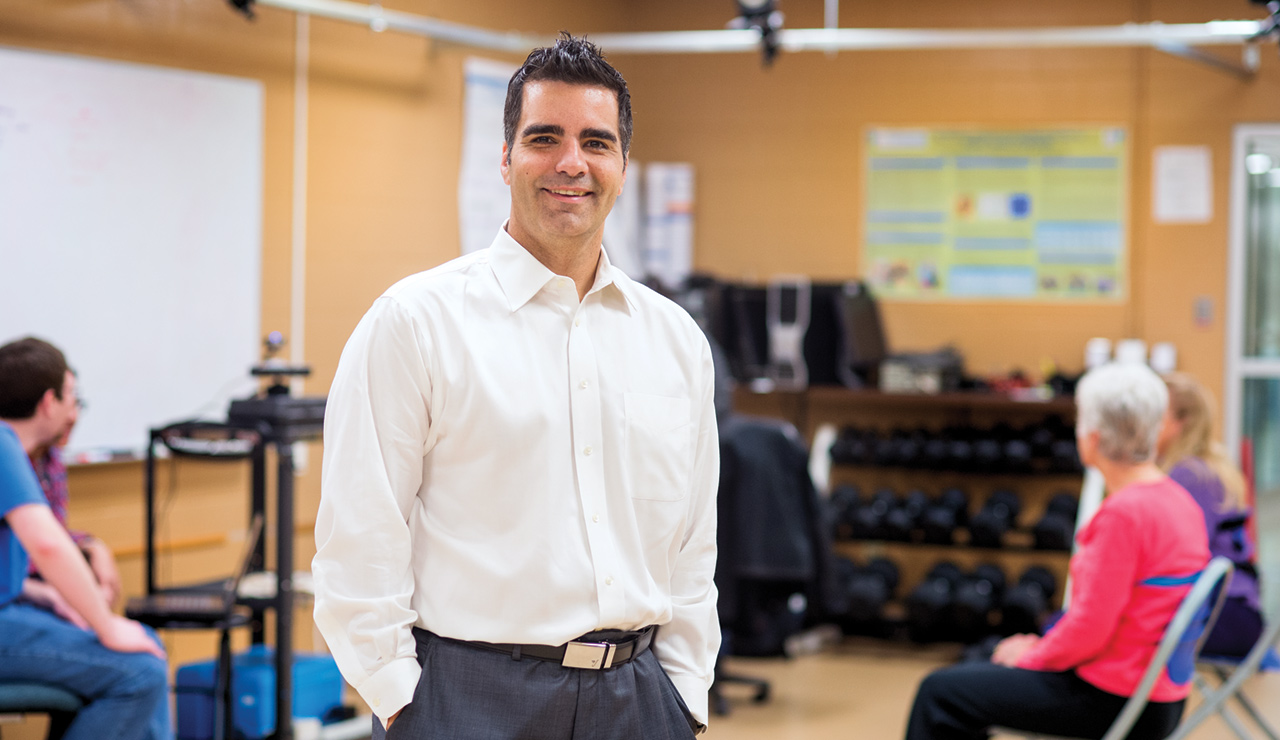
Rounds
Christopher Ray and his research team are finding ways to prevent falls.
Before the Fall
Laboratory helps reduce risk of falls in older adults
Two kinesiology faculty members were honored by the National Athletic Trainers’ Association. Cynthia Trowbridge, associate professor, received the Most Distinguished Athletic Trainer Award recognizing members involved in service and leadership activities at the national and district level. Paul Krawietz, clinical assistant professor, was selected for the Athletic Trainer Service Award recognizing volunteer efforts at the local and state level.
The World Health Organization cites falls as the number one cause of accidental deaths in senior adults, and a previous fall is the greatest indicator of a future one.
“People who fall are two to three times more likely to fall again within a year,” says Christopher Ray, associate dean for research in the College of Nursing and Health Innovation and director of UT Arlington’s Postural Control Laboratory, which has been helping senior adults prevent falls since 2008.
Dr. Ray and his team of students and research assistants do pre- and post-intervention measurements of participants to assess postural control, gait, fracture risk, and fitness—all factors in falls.
Evaluations may include fitness tests, bone density measurements, and assessments with computerized dynamic posturography, which uses a platform with three walls around it to simulate different cognitive and environmental changes as a participant stands. Results are compared to normative data of other seniors from the literature.
After the initial assessment, Ray and his colleagues look at how interventions can remediate any less-than-ideal function. Participants also are invited to the lab’s exercise classes to continue working on fall prevention, and Ray documents their progress. About 100 people participate in the classes, held every Monday, Wednesday, and Friday throughout the semester.
In addition to exploring acute issues—such as whether a specific intervention is better at improving a variable than another intervention—the lab can ask broader research questions that look at longitudinal change. Many participants have been coming to the lab for several years, allowing researchers to build a database looking at functional decline, the effects of exercise, and maintenance of independent lifestyle.
Ray is writing a grant for a study on day-to-day gait variability in older adults to better understand home-based gait monitoring for clinical interfaces with health centers and doctors. The goal is to catch people at earlier stages of functional decline.
“The earlier we can detect a problem and the earlier we can engage a clinical remedy allows us to preserve as much function as possible,” he says.
